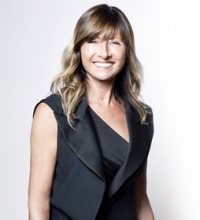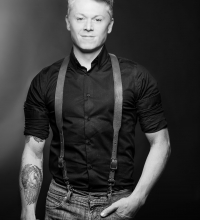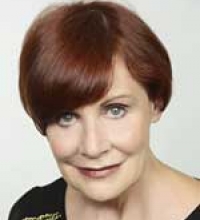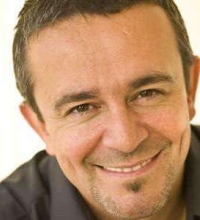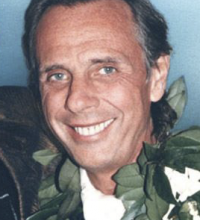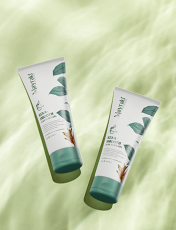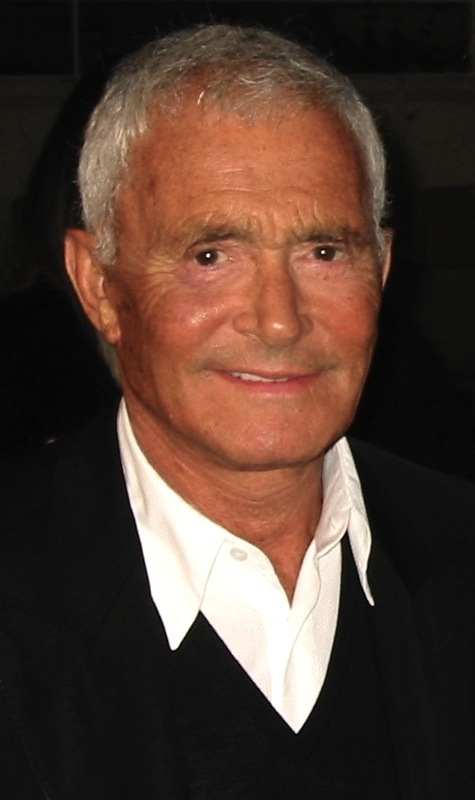 Vidal Sassoon was a British hairdresser, businessman, and philanthropist. He is credited with creating a simple geometric, "Bauhaus-inspired" hairstyle, also called the wedge bob.
Vidal Sassoon was a British hairdresser, businessman, and philanthropist. He is credited with creating a simple geometric, "Bauhaus-inspired" hairstyle, also called the wedge bob.
Establishing himself in the United States in 1965, he opened the first chain of worldwide hairstyling salons, complemented by a line of hair-treatment products that became an international brand. His company's 1980s television commercials featured the popular tag line, "If you don't look good, we don't look good."
History
Vidal Sassoon was born in Hammersmith, London, and lived in Shepherd's Bush. His mother, Betty (Bellin), came from a family of immigrants from Spain, and his father, Jack Sassoon, was from Thessaloniki, Greece.
His father left his family when Vidal was three years old. Due to poverty as a single parent, his mother placed Sassoon and his younger brother in a Jewish orphanage, where they stayed for seven years until he was 11 when his mother remarried. His mother was only allowed to visit them once a month and was never allowed to take them out. He attended Essendine Road Primary School, a Christian school, before being evacuated due to WWII to Holt, Wiltshire. After his return to London he left school at the age of 14 and worked as a messenger before starting a hairdressing apprenticeship.
VIdal trained under Raymond Bessone, in his salon in Mayfair. In 2010, Sassoon stated, "He really taught me how to cut hair...I'd never have achieved what I have without him."
Vidal opened his first salon in 1954 in London; singer-actress Georgia Brown, his friend and neighbor, claimed to be his first customer. He stated his intentions in designing new, more efficient, hairstyles: "If I was going to be in hairdressing, I wanted to change things. I wanted to eliminate the superfluous and get down to the basic angles of cut and shape.
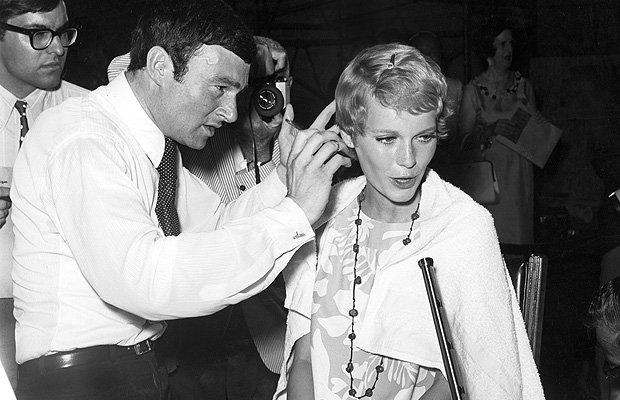 Sassoon's works include the geometric perm and the "Nancy Kwan" hairstyles. They were all modern and low-maintenance. The hairstyles created by Sassoon relied on dark, straight, and shiny hair cut into geometric yet organic shapes. In 1963, Sassoon created a short, angular hairstyle cut on a horizontal plane that was the recreation of the classic "bob cut." His geometric haircuts seemed to be severely cut, but were entirely lacquer-free, relying on the natural shine of the hair for effect.
Sassoon's works include the geometric perm and the "Nancy Kwan" hairstyles. They were all modern and low-maintenance. The hairstyles created by Sassoon relied on dark, straight, and shiny hair cut into geometric yet organic shapes. In 1963, Sassoon created a short, angular hairstyle cut on a horizontal plane that was the recreation of the classic "bob cut." His geometric haircuts seemed to be severely cut, but were entirely lacquer-free, relying on the natural shine of the hair for effect.
Advertising and cosmetics executive Natalie Donay is credited with discovering Sassoon in London and bringing him to the United States, where in 1965 he opened his first New York City salon, on Madison Avenue. In October 1971, Sassoon promoted his 30-year-old second-in-command, artistic director Roger Thompson, to director of the Sassoon salon, explaining, "Twenty-five years of schlepping behind a barber chair are enough!"
The Product Line
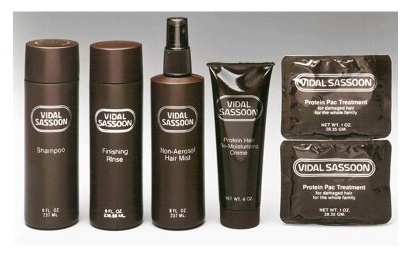 Sassoon began his "Vidal Sassoon" line of hair-care products in 1973. The actor Michael Caine, who when young and struggling "was roommates with Terence Stamp and Vidal Sassoon — he used to cut my hair, and he always had a lot of models around," claimed to have inspired this, saying, "I told him that he must have something that is working for him while he slept. I told him he had to make shampoos and other hair-care products."
Sassoon began his "Vidal Sassoon" line of hair-care products in 1973. The actor Michael Caine, who when young and struggling "was roommates with Terence Stamp and Vidal Sassoon — he used to cut my hair, and he always had a lot of models around," claimed to have inspired this, saying, "I told him that he must have something that is working for him while he slept. I told him he had to make shampoos and other hair-care products."
Whatever the inspiration, Sassoon's brand was applied to shampoos and conditioners sold worldwide, with a commercial campaign featuring the iconic slogan "If you don't look good, we don't look good." Former salon colleagues also bought Sassoon's salons and acquired the right to use his name, extending the brand in salons into the United Kingdom and the United States.
Helen of Troy Corporation began manufacturing and marketing Sassoon haircare products in 1980. On 24 April 1983, the firm Richardson-Vicks, which already owned the Pantene haircare line, announced it had purchased the Los Angeles-based Vidal Sassoon Inc. for an undisclosed amount, as well as Sassoon's Santa Monica, California, hairdressing school; the company had already bought his European businesses. Sassoon's 1982 sales of hair products had topped $110 million, with 80 percent of revenues derived in the US. Its management team at the time was headed by Sassoon, President and CEO Joseph Solomon, and Executive Vice President Martin Nason.
Two years later the company was bought by Procter & Gamble. Vidal, who remained a consultant through at least the mid-1990s, sued in 2003 for breach of contract and fraud in federal court for allegedly neglecting the marketing of his brand name in favor of the company's other hair product lines, such as Pantene.
In 2002, the chain of Vidal Sassoon salons was sold to Regis Corporation. By 2004, it was reported that Sassoon was no longer associated with the brand that bears his name.
Good Deeds
After selling his company, he then worked towards philanthropic causes such as the Boys Clubs of America and the Performing Arts Council of the Music Center of Los Angeles via his Vidal Sassoon Foundation. He was also active in supporting relief efforts after Hurricane Katrina. It also funded educational pursuits on a need-basis in Israel and elsewhere. At the time of his death he had academies in England, the United States and Canada, while initiating plans to open new ones in Germany and China.
The Loss of an Icon
In June 2011 it was reported that Sassoon had been diagnosed with leukemia two years earlier, and was receiving treatment in Beverly Hills, California, U.S.A. and London, U.K. He died in the presence of his family on 9 May 2012 at his home in Los Angeles.
Reactions to his death included Neil Cornelius, the incumbent owner of Sassoon's first solo venture, who said, “Vidal’s death was the loss of a hairdressing legend. It is very, very sad because I grew up in the East End like Vidal and from the age of 11 I wanted to be a hairdresser like Vidal. I remember the first time I met him. I have washed the hair of Princess Diana, I have met Nelson Mandela, but meeting Vidal Sassoon topped all of those. I know it sounds crazy but I could not sleep [before] the first time I met him. He was a hairdressing legend."
Other celebrity hairstylists also commented on his death. Lee Stafford said, "Sassoon revolutionalized the way everybody wears their hair today, he also made British hairdressing the best in the world, he was my hero."
Oscar Blandi credited Sassoon for showing him the true art of styling. “He truly changed the world of hair and beauty. He was definitely the most innovative person ever to enter the industry. He led the way for the celebrity stylists of today" and Tabatha Coffey wrote on Twitter, "my great day turned into a devastating day. RIP Vidal Sassoon thank you for all you have done for our industry and for me," said Blandi.
Grace Coddington, Sassoon's former model and creative director of American Vogue, said, "He changed the way everyone looked at hair. Before Sassoon, it was all back-combing and lacquer; the whole thing was to make it high and artificial. Suddenly you could put your fingers through your hair! He didn’t create [Sassoon's five-point cut] for me; he created it on me. It was an extraordinary cut; no one has bettered it since. And it liberated everyone. You could just sort of drip-dry it and shake it."
John Barrett of the John Barrett Salon at Bergdorf Goodman said, “Sassoon was the creator of sensual hair. This was somebody who changed our industry entirely, not just from the point of view of cutting hair but actually turning it into a business. He was one of the first who had a product line bought out by a major corporation."
In addition to his legacy in the hair industry, Sassoon leaves behind his wife, Rhonda "Ronnie" Sassoon and three surviving children: son Elan BenVidal; son David; and daughter Eden.
Other Awards and Honors
Sassoon was appointed Commander of the Order of the British Empire (CBE) in the 2009 Birthday Honours. He was twice a guest on BBC Radio 4's Desert Island Discs, on 27 June 1970 and 9 October 2011, when he was also Resident Thinker on the Nowhereisland art project. He also had a short-lived television series called Your New Day with Vidal Sassoon, which aired in 1980.
Vidal Sassoon: The Movie, a documentary film about his life, was released in 2010.

